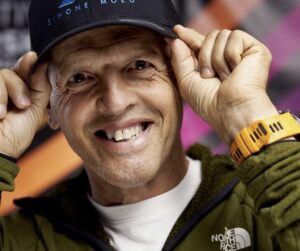The headliners of this year’s Ig Nobel science awards read like the itinerary of a Japanese game show.
Eating with electric chopsticks. Reanimated dead spiders. An “analyzing” toilet.
These experimental developments and more earned 2023’s “Ig Nobel” Prizes, awarded in a webcast Sept. 14 ceremony. In a reflection of the event’s punny name, the journal Nature has called the Ig Nobel Awards “arguably the highlight of the scientific calendar.”
It was the “33rd First Annual” rendition of the event that showcases “achievements that first make people LAUGH, then make them THINK.”
We’ve highlighted our favorite Ig Nobel expositions below.
‘Augmented gustation using electricity,’ Meiji University, Kanagawa, Japan
How much of the act of participating in a study group relies on the willingness to perform self harm in the pursuit of knowledge?
If eating with electrified utensils sounds like an episode in this sordid and deeply entrenched phenomenon, I’ve got news for you: It’s not.
Instead, two researchers from Japan’s Meiji University just wanted to find out an alternative channel to stimulate human “gustation” — or taste.
“Electric taste is the sensation elicited upon stimulating the tongue with electric current. We used this phenomenon to convey information that humans cannot perceive with their tongue,” the researchers assert in their paper.
The study first “proposes systems” to create electrically charged straws and chopsticks (which seems like the easy part if you’ve ever put a nine-volt battery on your tongue), then “discusses augmented gustation using various sensors.”
Bon appetit — or as we say in Japanese, Itadakimasu.
Turning dead spiders into robots, Rice University, Texas, U.S.
Scientists have consistently scrutinized natural structures with one key question: Can we engineer it better?
Acknowledging that “designs perfected through evolution” have inspired robots that mimic animals like cheetahs and jellyfish, this paper from researchers at Texas’ Rice University takes the next logical step.
“Incorporating living materials directly into engineered systems” is the slant. Dead spiders are the specimens.
Because spiders’ legs operate hydraulically, rather than muscularly, they can essentially be re-animated with fluids after death. The result is a mechanical “claw” or gripper that can lift 130% of its own mass.
“Furthermore, the gripper can serve as a handheld device and camouflages in outdoor environments,” the paper notes.
Zombies? Cyborgs? The next trend in handheld devices? No matter what, it’s got eight hydraulic legs. But you will need an ongoing supply of spiders, because each one “breaks down after 1,000 open and close cycles,” the narrator helpfully explains.
‘A mountable toilet system for personalized health monitoring via the analysis of excreta,’ Stanford University, Calif., U.S.
A self-contained “smart” toilet “operates autonomously” and uses pressure and motion sensors to scrutinize biological wastes.
“[We use] easily deployable hardware and software for the long-term analysis of a user’s excreta,” the researchers’ paper states.
To analyze stool, it leverages “deep learning, with performance that is comparable to the performance of trained medical personnel.”
The stated benefit is, of course, is to consistently monitor a user’s health through their excrement and seamlessly deliver that information to medical professionals.
The toilet stores and analyzes the data it harvests in an encrypted cloud server.
Whether or not the cloud is greenish brown is unclear.
To further explore the world of the 2023 Ig Nobel Awards, check out the host website, Improbable Research.






